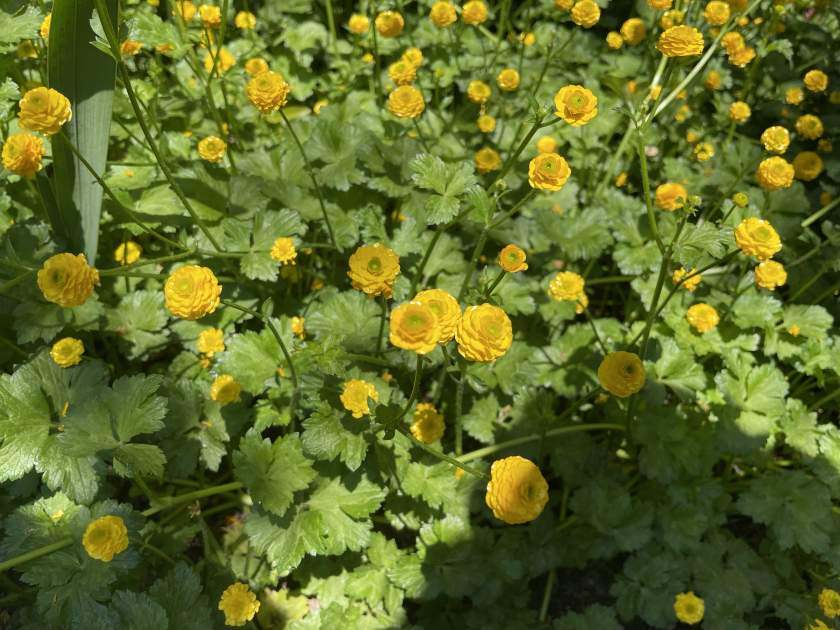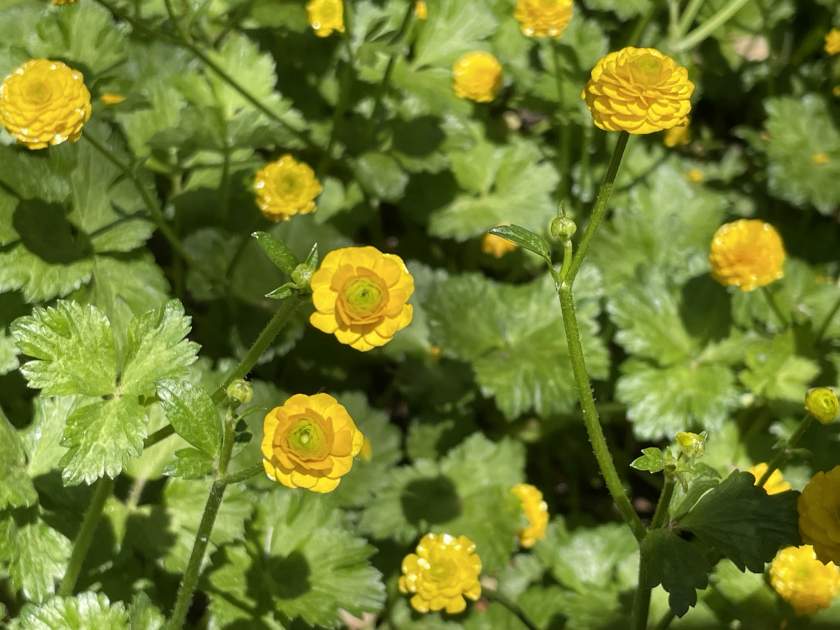Ranunculus repens var. pleniflorus: The Charming Double Creeping Buttercup
Ranunculus repens var. pleniflorus, commonly known as Double Creeping Buttercup or Popcorn Plant, is a perennial herbaceous plant that adds a touch of vibrant beauty to gardens. It belongs to the family Ranunculaceae. With its showy double golden-yellow flowers and spreading growth habit, this variety is a delightful addition to sunny or partially shaded areas. While it thrives in moist conditions, it requires careful management due to its aggressive nature. This article explores the characteristics, cultivation requirements, and propagation methods of Ranunculus repens var. pleniflorus.
Characteristics
Ranunculus repens var. pleniflorus is an erect, clump-forming perennial that produces tightly-double, rosette-like golden-yellow flowers. These charming blooms appear in late spring to early summer, adorning leafless flower stems that rise above loose clumps of palmately-lobed leaves. With a height and width ranging from 18 to 24 inches (45-60 cm), this variety adds a bright splash of color to beds, borders, and cottage gardens. It does not self-sow, making it easier to manage.
Cultivation of Ranunculus repens var. pleniflorus:
To successfully cultivate Ranunculus repens var. pleniflorus, specific aspects of care should be considered. The following subsections provide detailed guidelines for optimal cultivation practices:
Sunlight: Plant Ranunculus repens var. pleniflorus in an area that receives full sun to partial shade. It can adapt to different light conditions but performs best in areas with ample sunlight.
Watering: This plant prefers mesic conditions, meaning it requires moderate moisture. Ensure the soil remains consistently moist but not waterlogged. Regular watering is crucial, especially during periods of drought or in dry climates.
Soil: Ranunculus repens var. pleniflorus thrives in humus-rich, moist, and well-drained soil. The addition of organic matter can enhance soil fertility and moisture retention. Maintaining proper soil conditions is key to promoting healthy growth and blooming.
Pest and Disease: Ranunculus repens var. pleniflorus is generally a hardy plant with few pest issues. However, it is susceptible to powdery mildews, so it is important to monitor the plant for any signs of fungal infections. If detected, appropriate fungicidal treatments can be applied to manage the disease.
Propagation:
Ranunculus repens var. pleniflorus can be propagated through division in autumn. When dividing, carefully separate the clumps into smaller sections, ensuring that each division has sufficient roots and foliage. These divisions can then be replanted in suitable locations.
Additional Considerations:
- While Ranunculus repens var. pleniflorus is a captivating plant, it is important to note that its leaves and roots are toxic if ingested. Keep it away from pets and children who may unknowingly consume its poisonous parts.
- Regular division of the plant is beneficial not only for propagation but also to manage its spreading growth habit. Dividing the clumps in spring or fall helps control its aggressive nature and maintain its desired presence in the garden.
- Ranunculus repens var. pleniflorus can be an excellent choice for moist areas, such as near ponds or in water-retaining containers. This allows the plant to thrive in its preferred conditions while adding beauty to these specific locations.
With its double golden-yellow flowers and spreading growth habit, Ranunculus repens var. pleniflorus is a captivating perennial that can enhance various garden settings. By providing adequate sunlight, moisture, and well-drained soil, you can enjoy the beauty of this charming plant. Additionally, through careful propagation and management, you can ensure its presence while keeping its vigorous nature in check.





